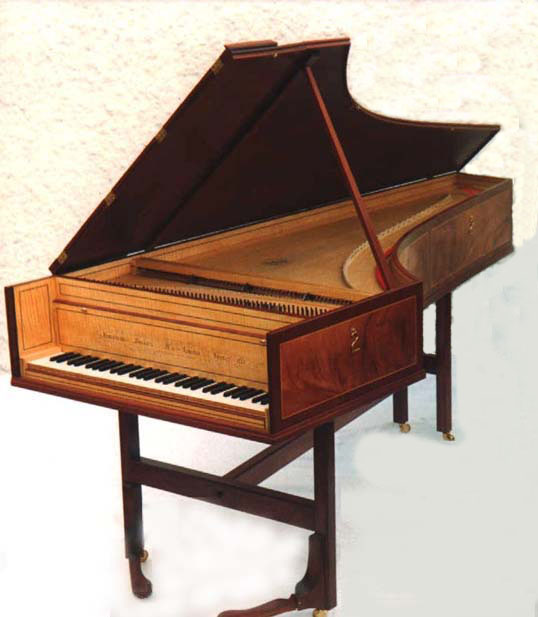The instrument ‘pianoforte’ is more popularly known by its shortened version–the piano. However, the instrument’s most complicated name yet belonged to the first piano, the ‘gravicembalo col piano, e forte’ that was named by a journalist in 1711. The meaning describes the qualities of the piano and likens it to a harpsichord with the added ability to make loud sounds (forte) and softer sounds (piano). Most instruments at the time lacked the ability to make softer or louder sounds aside from the clavichord. But the clavichord lacked the power of even
the earliest version of the piano. Musicians at the time envisioned the piano at the centre of many an ensemble because of this feature.
The maker of the piano Bartolomeo Cristofori (1655-1731) resided in Padua-Italy. In 1688 he was appointed in the court of the Grand Prince ‘Ferdinando de Medici’ to take care of the musical instruments of the court. In an inventory of the Medici court dated 1700, an instrument was also listed that was created by Cristofori named the arpicimbalo. It resembled the harpsichord, it had hammers and dampers, 2 keyboards and a range of 4 octaves.
This account was an account of the very first piano. By inference, historians have traced the date of the creation of the first piano to 1700. This instrument with many names began to see popularity as an instrument that had the qualities of a harpsichord but was loud enough to be a supporting or main role in an ensemble. That being said, in comparison to our modern day pianos the power and quality of the sound is weaker and damp. In fact, the first piano’s sound cannot compete with even the harpsichords of today. The piano has thinner strings than the modern day piano and only has 54 keys, whereas the modern day piano boasts 88 keys.
The modern day piano consists of 2500 parts, more parts than its sister string instruments have. Modern day pianos, upright or grand generally comprises of 5 structural areas. These areas are: the wooden case of the wing shaped grand piano or the case of an upright piano, this also includes the keybed where the keys would be installed; the second piece is the soundboard that comprises of the bridges and ribs, it helps to amplify the sounds of the strings; the third piece is the cast iron plate; then there are the 236 strings of the piano and finally the keys, hammers and piano action/ mechanism.
Cristofori had solved many technical problems of the piano while making it, problems that would leave pianists and developers baffled for several years. One of Cristofori’s additions allowed the hammer of a piano that hits the string to immediately bounce off the string. This helped avoid the dampening of the sound and made the tone sharper. Another ingenious bit he introduced was a mechanism to control the hammer from bouncing back when it would hit a string a second time. These mechanisms/ the complicated action were expensive and therefore they
were removed off various pianos created after Cristofori’s piano. But the additions were very much needed and were reintroduced in later models.
Many of the qualities of Cristofori’s piano were used an accounted for to create better versions. These versions were critically acclaimed even by Johann Sebastian Bach who was hard to please. He would go on to compliment and even market the pianos. Today. there are three of Cristofori’s pianos that have survived. The oldest one resides in the Metropolitan Museum of Art.








